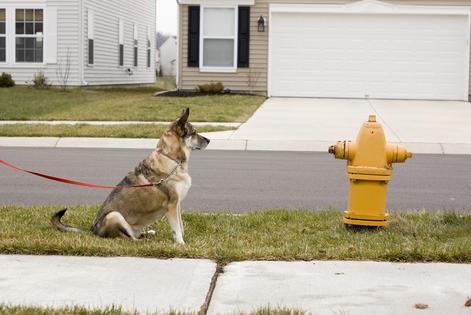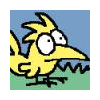My Pet World: Training your dog to use the yard instead of walks to 'go potty'
Dear Cathy,
My husband and I adopted/rescued a six-year-old Mini Schnauzer eight months ago. She has been a wonderful addition to our family. We are both in our 70s and live in a single-family, one-level home but do not have a fenced-in yard. For this reason, we always take her on walks to "do her duty." I wish she would poop and pee in our yard. But when we take her outside, she just looks up at us, waiting for the walk to begin.
The ice, snow, and freezing temperatures this past winter made it hard for us to walk any distance on icy sidewalks. How do we get her to poop and pee right outside? We've come to love her, but we're getting anxious about the upcoming winter months.
— Betsy, Naperville, Illinois
Dear Betsy,
Start by teaching her a "go potty" command. Use the command consistently during her walks, just before she relieves herself. Mark the behavior with a clicker or a reward word, like "bingo" or "good girl," followed by a treat. If this is your first time using a clicker or reward word, start by teaching her what it means. Ask her to do something she already knows, like sit. When she sits, click the clicker, or say the reward word, and follow up with a treat. Once she understands this association, apply the same technique during your walks by saying, "Go potty," just before she relieves herself.
Once you feel she fully understands the command, which could take a few weeks, designate a specific area in your yard as her potty spot. Before her walk that day, take her on leash to the spot in your yard and use the "go potty" command. (She learned to relieve herself on a leash, so keep her on a leash during this training.) Be patient as it may take a few minutes for her to follow your command. Follow with the clicker or reward word when she finally goes potty in your yard.
With patience and persistence, she will learn she doesn't need a walk to "go potty."
Dear Cathy,
We rescued our dog Hank at eight weeks, so we know his age. He's four years old and pitch black. But he is rapidly turning white. His snout and now underbelly are almost pure white. Is he aging prematurely? I hope not. Or can it be a genetic trait? It would alleviate our concerns if we could have an answer from you.
— Helen, Rocky Point, New York
Dear Helen,
There could be several reasons your dog's fur is turning white prematurely —age, stress, genetics, or health problems — so it can only be answered by a process of elimination. Given that he's only four, it's less likely to be age. So, if you haven't already, please take Hank to the vet to get a diagnosis or to rule out health problems, like hypothyroidism and vitiligo, a rare skin disorder, as these may cause this issue.
Dear Cathy,
Our cat, Jimmy, used to eat his food so quickly that he wouldn't chew his dry food properly and would end up throwing it up. He gets a quarter cup of dry food twice a day. To solve the problem, we started splitting his dry food into two bowls and giving him half at first and then the other half an hour later. Since we started doing this, we haven't had any more issues with him throwing up.
— Matt, Normal, Illinois
Dear Matt,
It's wonderful to hear that Jimmy is doing better with your approach. Slow feeding techniques, like the one you've implemented, can be very effective for cats and dogs who eat too quickly. Splitting the meals and spacing out the feeding times helps prevent vomiting caused by rapid eating. You can also try slow feeder bowls, which are designed with ridges to slow a cat's eating pace. These bowls and mats work well with fast-eating dogs and cats.
Dear Cathy,
I have the same problem as the lady in Nebraska whose cat is old and wakes her up at 3:00 a.m. I keep a bag of food on my bed at night and give it to her when she wakes me up. It keeps her for two more hours.
— Cathy, West Babylon, New York
Dear Cathy,
Kudos on your low-tech, no-cost solution. You could also buy an automatic feeding bowl that dispenses food at 3 a.m. She will learn very quickly when the food dispenses and will be sitting in front of it waiting for her meal/treats, allowing you to sleep uninterrupted.
_____
_____
========
(Cathy M. Rosenthal is a longtime animal advocate, author, columnist and pet expert who has more than 25 years in the animal welfare field. Send your pet questions, stories and tips to cathy@petpundit.com. Please include your name, city, and state. You can follow her @cathymrosenthal.)
©2024 Tribune Content Agency, LLC.
(c) 2024 DISTRIBUTED BY TRIBUNE MEDIA SERVICES, INC.












Comments